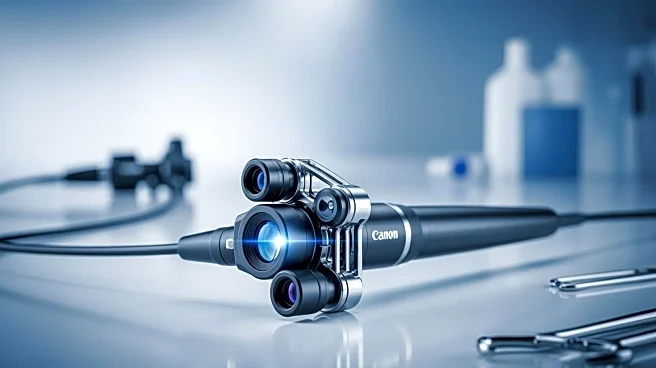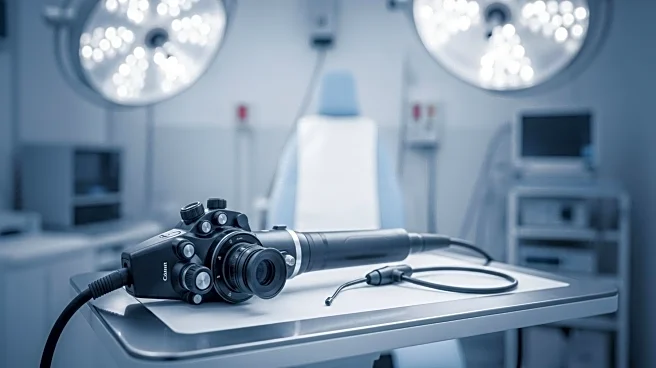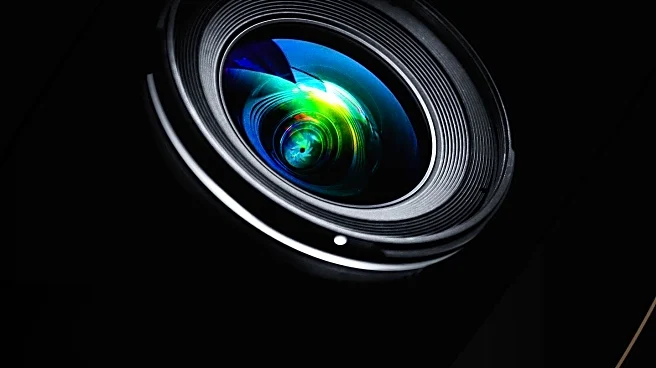What's Happening?
Olympus Canada Inc. has announced the launch of its EZ1500 series endoscopes, featuring Extended Depth of Field (EDOF) technology, as part of the EVIS X1 endoscopy system. This new technology aims to improve the clarity and focus of images during gastrointestinal
endoscopy procedures. The EDOF technology utilizes two prisms to split light entering the endoscope lens into near- and far-focused images, which are then combined into a single image with a wide depth of field. This advancement allows for sharper images and may aid in the detection of lesions as endoscopists inspect the mucosal lining of the GI tract. The launch coincides with the 36th annual Therapeutic Endoscopy Course in Toronto, where the technology will be showcased.
Why It's Important?
The introduction of the EZ1500 series endoscopes with EDOF technology represents a significant advancement in gastrointestinal diagnostics. By providing clearer images, this technology enhances the ability of healthcare providers to detect and diagnose conditions earlier, potentially improving patient outcomes. The improved visibility and reduced blurring can lead to more accurate assessments and treatments, which is crucial in the field of gastroenterology. This innovation underscores Olympus Canada's commitment to advancing clinical practice and supporting healthcare providers with cutting-edge technologies.
What's Next?
The EZ1500 series endoscopes will be featured during the Therapeutic Endoscopy Course, providing healthcare professionals with the opportunity to experience the technology firsthand. As Olympus continues to innovate, the company may further expand its offerings in medical imaging technology, potentially influencing the standard practices in gastrointestinal diagnostics. Healthcare providers and institutions may begin integrating these advanced endoscopes into their procedures, leading to widespread adoption and potentially setting new benchmarks in endoscopic imaging.
Beyond the Headlines
The launch of the EZ1500 series endoscopes not only highlights technological advancements but also reflects broader trends in medical technology aimed at improving diagnostic accuracy and patient care. The focus on enhancing image clarity and reducing procedural complexity aligns with ongoing efforts to streamline healthcare processes and improve efficiency. As medical technology continues to evolve, ethical considerations regarding accessibility and cost may arise, prompting discussions on how to ensure equitable access to these advanced diagnostic tools.














